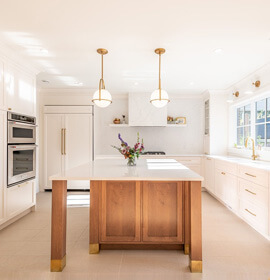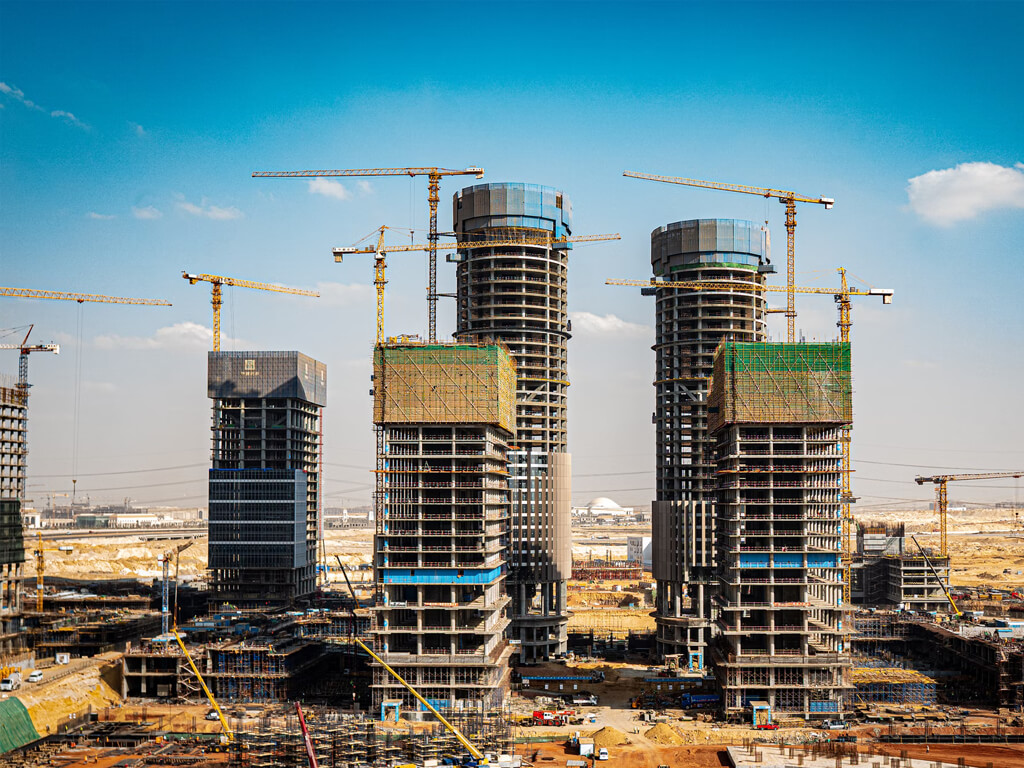How Glass is Revolutionizing the Skyscraper and Tall Building Industry
The skyscraper and tall building industry is undergoing a revolution, thanks to the introduction of glass. Glass has revolutionized the industry, providing architects and engineers with the ability to create stunning, iconic structures that are both aesthetically pleasing and structurally sound. Glass is also helping to reduce energy consumption and costs, making tall buildings more sustainable and efficient. With its strength, flexibility, and durability, glass is transforming the way we build tall structures, and its impact on the industry is only just beginning.
Exploring the Benefits of Glass in Skyscraper Design
The use of glass in skyscraper design has been a popular choice for architects and designers for decades. This is due to the many benefits that glass provides, such as its lightness, transparency, and versatility. Glass is a material that can be used to create a variety of shapes and sizes, and its reflective properties can create an impressive visual effect.
Glass is a great choice for skyscraper design because it allows for natural light to enter the building, which can reduce energy costs and improve the overall ambiance of the building. Additionally, glass can be used to create a variety of different looks, from modern and sleek to traditional and ornate. This makes it a great choice for architects who want to create a unique look for their skyscraper.
Glass is also an choice for skyscraper design it is strong and durable It can withstand the and is resistant to wear and. This makes it an choice for buildings that will exposed to the elements such as those in coastal.
Glass is a great choice for skysc design because it is easy to maintain. is non-porous, meaning it won’t absorb dirt and grime, making it easy to keep clean. Additionally, glass is fire-resistant, which makes it a great choice for buildings in areas prone to wildfires.
Finally, glass is a great choice for skyscraper design because it is a relatively inexpensive material. This makes it a great choice for architects who are working on a budget. Additionally, glass is a recyclable material, which makes it an environmentally friendly choice.
Overall, glass is an excellent choice for skyscraper design due to its many benefits. It is lightweight, durable, easy to maintain, and relatively inexpensive. Additionally, it is a recyclable material, making it an environmentally friendly choice. Glass is a great choice architects who want to create unique look for their skysc.
Examining the Innovative Uses of Glass in Tall Buildings
Glass has been a popular material for building construction for centuries, but in recent years, it has been used in increasingly innovative ways in tall buildings. From the shimmering towers of the world’s major cities to the modern skyscrapers of the future, glass is being used to create stunning and functional structures.
Glass is an ideal material for tall buildings because it is lightweight, strong, and highly durable. It also allows for maximum natural light to enter the building, reducing the need for artificial lighting and creating a bright and airy atmosphere. In addition, glass can be used to create visually stunning structures, with its reflective and transparent properties allowing for a variety of shapes and designs.
Glass is also being used in increasingly innovative ways in tall buildings. For example, it is being used to create double-skin facades, which are made up of two layers of glass separated by an air gap. This helps to insulate the building, reducing energy costs and improving its environmental efficiency. In addition, glass can be used to create atriums, which are large, open spaces within the building that allow natural light to flood in.
Glass is also being used to create innovative structural elements, such as curved glass walls and cantilevered glass balconies. These elements can create a unique aesthetic and provide stunning views of the surrounding area. In addition, glass can be used to create stunning features such as sky bridges, which are bridges that connect two buildings at different heights.
Glass is also being used to create green walls, which are walls made up of plants and vegetation. These walls help to improve air quality and reduce energy costs, as well as providing a beautiful aesthetic.
Overall, glass is being used in increasingly innovative ways in tall buildings, allowing for stunning designs and improved environmental efficiency. Its lightweight, strong, and durable properties make it an ideal material for tall buildings, and its reflective and transparent properties allow for a variety of shapes and designs. As the use of glass in tall buildings continues to evolve, it is sure to create some truly stunning structures.
Understanding the Impact of Glass on Structural Integrity
Understanding the impact of glass on structural integrity is an important part of building design and construction. Glass is a unique material that can be used to create stunning and modern structures, but it is also a material that can be vulnerable to certain environmental conditions. It is important to understand the impact of glass on structural integrity in order to ensure the safety and longevity of a building.
Glass is a brittle material, meaning that it can easily break or shatter when exposed to extreme temperatures or sudden impacts. This can be a major concern when it comes to structural integrity, as the failure of a single piece of glass can lead to the collapse of an entire structure. Additionally, glass is susceptible to thermal expansion and contraction, meaning that it can expand and contract in response to changes in temperature. This can cause stress on the surrounding structure, potentially leading to cracks and other structural damage.
The use of glass in a building can also have an impact on its energy efficiency. Glass is a good insulator, meaning that it can help to keep a building warm in the winter and cool in the summer. However, glass can also allow a lot of heat to escape, leading to higher energy bills. Additionally, glass can allow a lot of light to enter a building, which can be beneficial in certain situations, but can also lead to an increase in cooling costs due to the need to use air conditioning.
When designing a building, it is important to consider the impact of glass on structural integrity. The use of glass can be beneficial in certain situations, but it is important to understand the potential risks associated with its use. It is also important to consider the energy efficiency of a building when incorporating glass into its design. By understanding the impact of glass on structural integrity, architects and engineers can ensure that a building is safe and efficient.
Investigating the Role of Glass in Energy Efficiency
Glass plays an important role in energy efficiency, as it is used in many applications to reduce energy consumption. Glass is a highly efficient material for insulation, allowing it to be used in windows, doors, and other building components to reduce heat transfer and keep temperatures inside a building comfortable. Glass also reflects light, which can reduce the need for artificial lighting and save energy.
Glass is also used in the construction of solar panels, which convert sunlight into electricity. Solar panels are becoming increasingly popular as a renewable energy source, and glass is an essential component of their design. Solar panels are made up of several layers of glass, which are designed to capture and convert the sun’s energy into electricity. The glass also helps to protect the solar cells from the elements, increasing their efficiency and lifespan.
Glass is also used in the construction of greenhouses, which are designed to trap heat and create a warm environment for plants to grow. Greenhouses are often constructed with double-glazed glass, which helps to keep the temperature inside the greenhouse consistent and reduces the need for artificial heating. This helps to reduce energy consumption and can also reduce the cost of growing plants.
Glass is also used in the construction of photovoltaic cells, which are used to generate electricity from sunlight. Photovoltaic cells are made up of several layers of glass, which are designed to capture and convert the sun’s energy into electricity. This technology is becoming increasingly popular as a renewable energy source, and glass is an essential component of its design.
Glass is a highly efficient material for energy efficiency, and it is used in many applications to reduce energy consumption. It is used in windows, doors, and other building components to reduce heat transfer and keep temperatures inside a building comfortable. It is also used in the construction of solar panels, greenhouses, and photovoltaic cells to generate electricity from sunlight. By using glass in these applications, energy consumption can be reduced and renewable energy sources can be more easily accessed.
Assessing the Impact of Glass on Aesthetics in Skyscrapers
Glass has become an increasingly popular material in the construction of skyscrapers due to its ability to create a modern aesthetic. Its use in skyscrapers has been particularly effective in creating an atmosphere of sophistication and luxury. By allowing natural light to enter the building, glass can create a sense of openness and spaciousness. Additionally, its reflective properties can add an extra layer of visual interest to the exterior of the building.
The use of glass in skyscrapers has been a major factor in the development of modern architecture. By allowing for the creation of more intricate and complex designs, glass has enabled architects to create structures that are aesthetically pleasing and unique. This has allowed for the development of more interesting and visually appealing buildings.
The impact of glass on aesthetics in skyscrapers is evident in the of large windows and glassades. These features allow an increased amount of natural to enter the building, creating a more open and inviting atmosphere. Additionally, the reflective properties of glass can create a unique visual effect, as the light reflects off the glass and creates an interesting play of light and shadow.
The use of glass in skyscrapers has also allowed for the development of more creative and innovative designs. By allowing for the use of curved and angled glass, architects have been able to create structures that are more visually appealing and unique. This has allowed for the development of more modern and contemporary designs that are both aesthetically pleasing and functional.
Overall, the use of glass in skyscrapers has had a major impact on the aesthetics of modern architecture. By allowing for the creation of more intricate and creative designs, glass has enabled architects to create structures that are both aesthetically pleasing and functional. Additionally, its reflective properties have added an extra layer of visual interest to the exterior of the building. As a result, the use of glass in skyscrapers has had a major impact on the aesthetics of modern architecture.
In conclusion, glass is revolutionizing the skyscraper and tall building industry in a number of ways. From increased energy efficiency to improved aesthetics, glass is allowing architects to design more innovative and sustainable structures. By utilizing the latest advances in glass technology, architects are able to create taller, more efficient, and more aesthetically pleasing structures. As the industry continues to evolve, glass will remain a key component in the development of tall buildings.
Excerpt
Glass is revolutionizing the skyscraper and tall building industry, allowing for larger, lighter, and more energy efficient structures. By using glass in place of traditional materials, architects are able to create structures that are more transparent, inviting, and open to the public.


